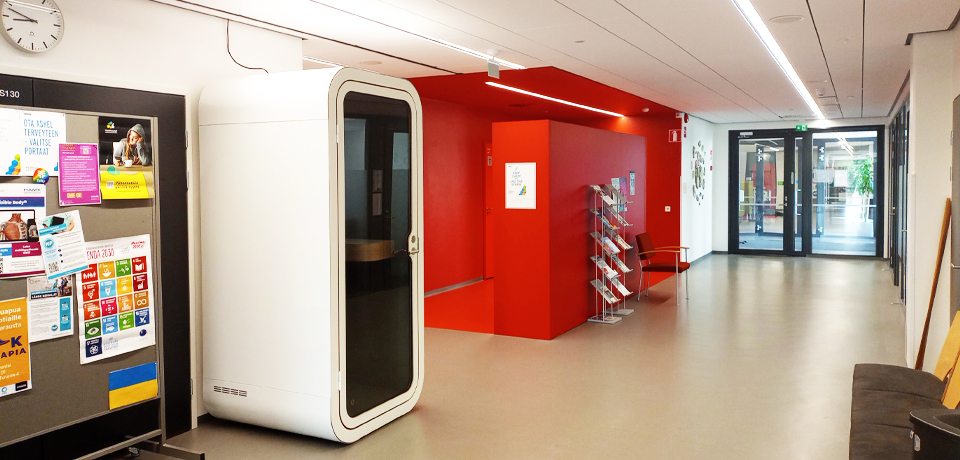
Wangkang Jin, Jukka Pulkkinen & Atte Partanen
Sustainable development requires lower carbon emissions to combat climate change. However, a lot of energy waste occurs in the field of heating since the heat storage capacity of the building is not fully utilized. One reason is that it is difficult to quantify this type of capacity. Therefore, we aim to explore how to simulate the heat storage capacity of buildings so that energy consumption could be reduced by optimizing the district heating. In this research, we attempted to represent the heat storage capacity of Häme University of Applied Sciences’ (HAMK) S building located in the Hämeenlinna University Centre by simulating the duration of the indoor temperature change due to reduced heating at different outside temperatures. The results show that S building can store heat and this capacity can be used for further research on heating strategy.
Introduction
Sustainable development is regarded as an emerging trend in human society development. However, global warming and atmospheric pollution caused by fossil fuel emissions hinder the process of sustainable development. To solve this problem, how to reduce energy consumption scientifically and effectively has become a hot topic and attracted researchers all over the world. According to European Commission, almost 40% of total energy consumption and 36% of greenhouse gas emissions originate from buildings and they are the single largest energy consumer in EU countries (Kangas et al., 2018). Therefore, civil constructions have a huge potential for energy saving and climate change mitigation compared to many other areas of the economy.
Heating is the main purpose and the largest energy-consuming part of buildings throughout the world, including district heating and dispersed heating (Talebi et al., 2016). In Finland, district heating is widely used in both residential and public buildings, accounting for about half of the heating market share (Paiho & Saastamoinen, 2018). Previous studies have proved that district heating systems (DHSs) outperform other heating technologies, which can increase heating efficiency and reduce environmental pollution (Rezaie & Rosen, 2012; Köfinger et al., 2016). However, Turski & Sekret (2018) indicated that the heat output of DHS can be optimized, and it is possible to compensate for the lack of heat output by using heat storage of buildings. As a result, the total energy consumption of the district heating can be reduced. Therefore, how to quantify the heating storage capacity of buildings properly becomes a question for us.
The heating storage capacity of buildings means the amount of heat the buildings can store. It can be used to improve the efficiency and flexibility of heating system by altering heat consumption (Hietaharju, 2021). In this paper, we propose a data-driven method to investigate if the heat storage capacity of HAMK’s S building in the Hämeenlinna University Centre can be represented by how fast the inside temperature drops after reduction in heating energy. To be specific, the more time it takes for the inside temperature to drop to the target value, the higher the heat storage capacity of the building is, and vice versa. The research goals are as follows:
- To model the district heating system: finding the correlation between district heat power and indoor temperature in the building.
- To simulate the duration times of the inside temperature decreases along with different percentage reductions of heating energy consumption.
Methodology
Heating storage capacity depends on the heat capacity of the storage medium, which can be calculated by the ratio of the heat change to the temperature rise within a given time (Zeinelabdein et al., 2018). Thus, this capacity of buildings is negatively correlated to the change in the inside temperature. However, the inside temperature of buildings needs to be maintained within a thermal comfort range. Therefore, the time required for a certain inside temperature change is used to simulate this correlation in practice instead of the change itself. As for the heat change, it should be constant during the period of inside temperature change.
Before researching heat storage capacity, it is necessary to establish a thermal model of a building including predictive capacity (Olsthoorn et al., 2017). Hietaharju (2021) presented a physical model for predicting the inside temperature in buildings. However, it is obvious that physical-based modeling is time-consuming and complicated to implement. In this study, we applied a data-driven method to build his inside temperature prediction model, which is explained in detail in another article of us (Jin & Pulkkinen, 2022).
The indoor temperature model is defined as (Hietaharju, 2021):
Tin (t) = a0 + a1 Tin (t – 1) + a2 P (t – θ1) + a3 P (t – θ2) + a4 P (t – θ3) + a5 P (t – θ4) + a6 Tout (t – 1)
where Tin and Tout are the average indoor temperature of all rooms in this building and outdoor temperature, P is the district heating energy consumption (kW), 1 < θ1 < θ2 < θ3 < θ4 are values of delay hours , a0 is constant and a1, a2,…, a6 are coefficients. The state in which the temperature doesn’t change in time is called the steady state. To find how much energy is consumed in the steady state, we assume that there are no delays for the energy transmission, which means θ1, θ2, θ3 and θ4 are all 0. Therefore, the inside temperature model can be simplified as:
Tin = b0 + b1 Tin + b2 P + b3 Tout
where b0 = a0 , b1 = a1 , b2 = a2 + a3 + a4 + a5 , and b3 = a6. Therefore, the steady-state energy consumption of buildings can be defined as a constant:
Pst = [(1 – b1) Tin – b3 Tout – b0 ] / b2.
Then, the district heating energy consumption reduction can be defined as different percentages cut down of the steady-state energy consumption:
Pre = α ∙ Pst , α ∈ (0,1).
With the given starting inside temperature Tin (0), outside temperature Tout, and the district heating energy consumption reduction Pre, the inside temperature could be calculated recurrently until it decreases to the value we set. And the time it takes for the process can be used to represent the heat storage capacity of the building. Furthermore, we also test our model at different outside temperatures and replace energy consumption with radiator network temperature for simulation, laying the foundation for subsequent research on control strategies.
Results
The raw dataset was collected from S building in winter 2022. It is a school building belonging to HAMK and located in the University Centre. Since we wanted to explore the performance of the building in a relatively cold environment, we selected 13.01.2022 to 01.03.2022 as the specific period to conduct this experiment, during which the raw data was also of good quality. During this period, the timestamps were recorded per hour and 80% of the dataset was used for modelling and the remaining 20% was used for simulation.
The first step of this experiment was to preprocess the raw data. For example, Min-Max Scaling was carried out to scale values of parameters to the range [0,1]. Then, the best delay-hour combination was tuned by calculating the minimum root mean square error (RMSE) between the predicted inside temperature and the measured. In this experiment, 1,3,4,12 hours delay parameters of district heating energy consumption could generate the minimum RMSE of inside temperature. Therefore, the developed indoor temperature model is the following:
Tin (t) = 20.837 + 0.880 × T’in (t – 1) + 0.276 × P’ (t – 1) + (-0.157) × P’ (t – 3) + 0.016 × P’ (t – 4) +(-0.033) × P’ (t – 12) + 0.060 × T’out (t – 1),
where T’in, T’out, and P’ are inside temperature, outside temperature and district heating energy consumption, respectively.
The changes in the heating were kept small and in a proper range to ensure indoor thermal comfort. Besides, as shown in Figure 1, the measured inside temperature fluctuated between 21℃ and 22℃ approximately during the simulation period. Therefore, we defined the initial value of the inside temperature as 22℃ and the target value as 21℃. Based on this, we could calculate steady-state energy consumption with different outside temperatures. With these parameters, we can find the duration when the inside temperature decreases from the initial value to the target value, which can be used to concretize the heat storage capacity of the building. The visualization of results is shown in Figure 2.
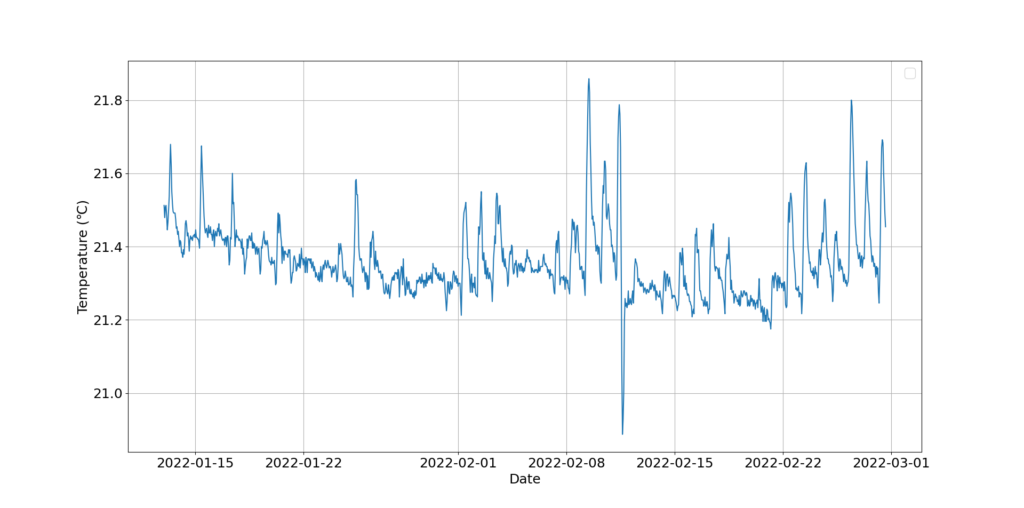
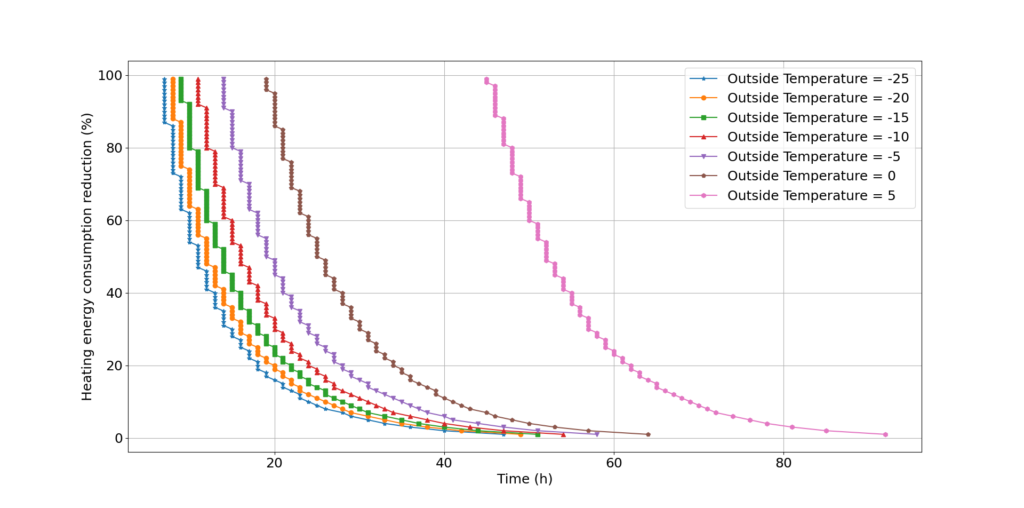
In order to verify the results, we replaced heating energy consumption with radiator network temperature. The Pearson correlation coefficient is 0.8333 between district heating energy consumption and radiator network temperature. Thus, they are linearly correlated. As shown in Figure 3, the model is R = 0.1913P + 26.9170, where R is the radiator network temperature and P is the district heating energy consumption. Figure 4 presents both the district heating energy consumption and the radiator network temperature during the simulation period of this experiment. The values of steady-state energy consumption and radiator network temperature on different outside temperature are listed in Table 1.
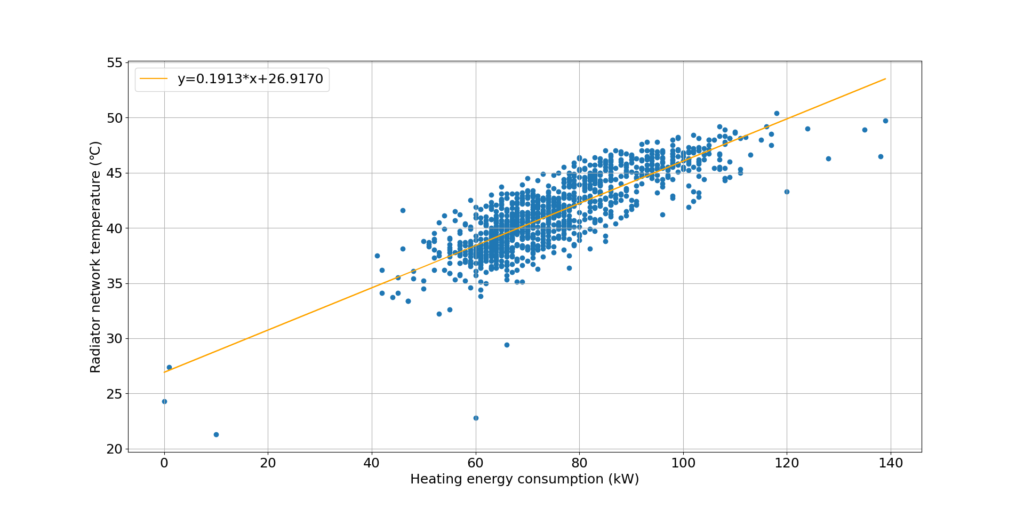
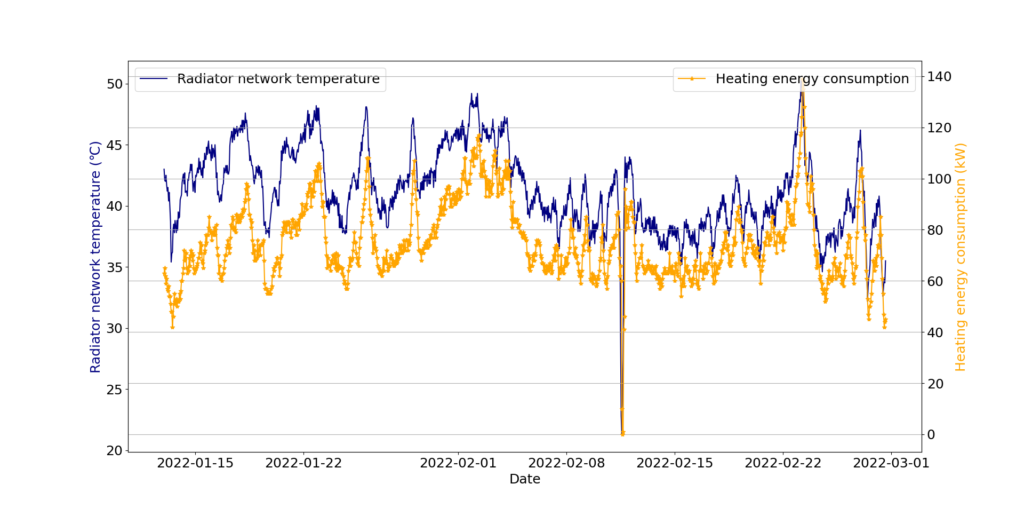
Table 1: The steady-state heating energy consumption and radiator network temperature at different outside temperatures.
| Outside Temperature (℃) | Energy Consumption (kW) | Radiator Network Temperature (℃) |
|---|---|---|
| -25 | 123.40 | 50.91 |
| -20 | 103.07 | 46.63 |
| -15 | 82.74 | 42.75 |
| -10 | 62.42 | 38.86 |
| -5 | 42.09 | 34.97 |
| 0 | 21.77 | 31.08 |
| 5 | 1.44 | 27.19 |
Conclusion
We have analyzed the possibility to use HAMK’s S building as an example to represent heat storage capacity by the time it takes for the inside temperature to drop because of heating energy consumption reduction. The indoor temperature prediction model was developed by using the method presented in the academic dissertation (Hietaharju, 2021). Furthermore, we have got durations for the inside temperature of the S building to decrease due to district heating energy consumption reduction at different outside temperatures. The results showed that this building has a good capacity to store heat. The next step is to analyze how to use the building’s heat storage capacity to develop a strategy to control the radiator network temperature and save energy consumption simultaneously in the future.
Authors
Wangkang Jin holds a Master’s Degree from Aalto University majoring in Autonomous Systems. Now he is working in HAMK Smart research unit as project engineer in ÄlyKaupunki project.
Jukka Pulkkinen holds a Ph.D. in Automation and System Technology from the Helsinki University of Technology. Currently, he is the director of HAMK Smart research unit at Häme University of Applied Sciences. From 2003 to 2017, he held several management positions in Valmet. He has also held a few research positions at the Tampere University of Technology in the 1990s.
Atte Partanen holds a Bachelor of Business Administration, Automation Engineering from Häme University of Applied Sciences. Now he is working in HAMK Smart research unit as solution specialist in ÄlyKaupunki project and his research interest is IoT technology.
References
Hietaharju, P. (2021). Predictive optimization of heat demand utilizing heat storage capacity of buildings [Doctoral dissertation, University of Oulu]. http://urn.fi/urn:isbn:9789526231310
Jin, W., & Pulkkinen, J. (2022). Indoor temperature simulation of a district-heated school building to create demand response capability. HAMK Unlimited Professional, 26.9.2022. https://urn.fi/URN:NBN:fi-fe2022092159805
Kangas, H. L., Lazarevic, D., & Kivimaa, P. (2018). Technical skills, disinterest and non-functional regulation: Barriers to building energy efficiency in Finland viewed by energy service companies. Energy Policy, 114, 63–76.
Köfinger, M., Basciotti, D., Schmidt, R. R., Meissner, E., Doczekal, C., & Giovannini, A. (2016). Low temperature district heating in Austria: Energetic, ecologic and economic comparison of four case studies. Energy, 110, 95–104.
Olsthoorn, D., Haghighat, F., Moreau, A., & Lacroix, G. (2017). Abilities and limitations of thermal mass activation for thermal comfort, peak shifting and shaving: A review. Building and Environment, 118, 113–127.
Paiho, S., & Saastamoinen, H. (2018). How to develop district heating in Finland? Energy Policy, 122, 668–676.
Rezaie, B., & Rosen, M. A. (2012). District heating and cooling: Review of technology and potential enhancements. Applied Energy, 93, 2–10.
Talebi, B., Mirzaei, P. A., Bastani, A., & Haghighat, F. (2016). A review of district heating systems: modeling and optimization. Frontiers in Built Environment, 2, 22.
Turski, M., & Sekret, R. (2018). Buildings and a district heating network as thermal energy storages in the district heating system. Energy and Buildings, 179, 49–56.
Zeinelabdein, R., Omer, S., & Gan, G. (2018). Critical review of latent heat storage systems for free cooling in buildings. Renewable and Sustainable Energy Reviews, 82, 2843–2868.





